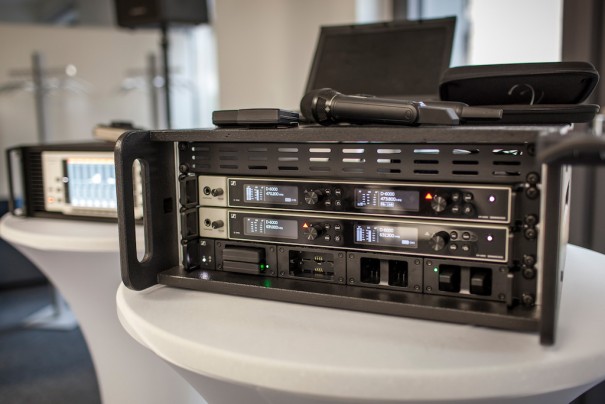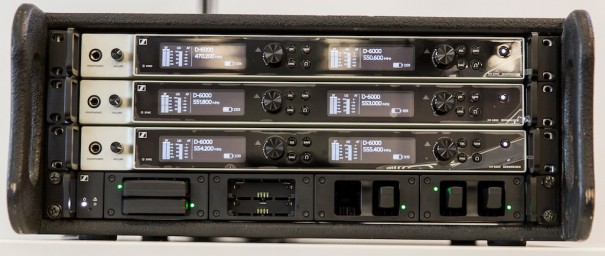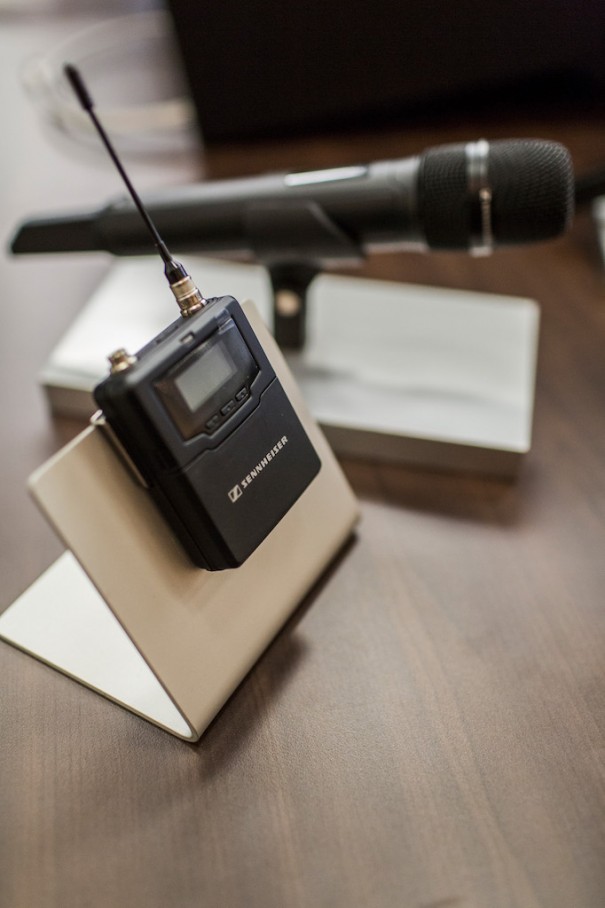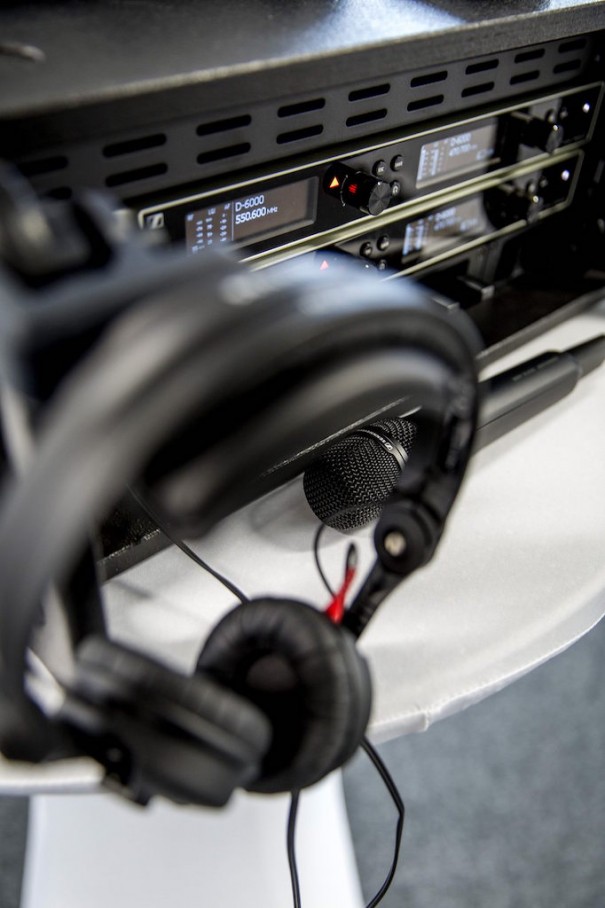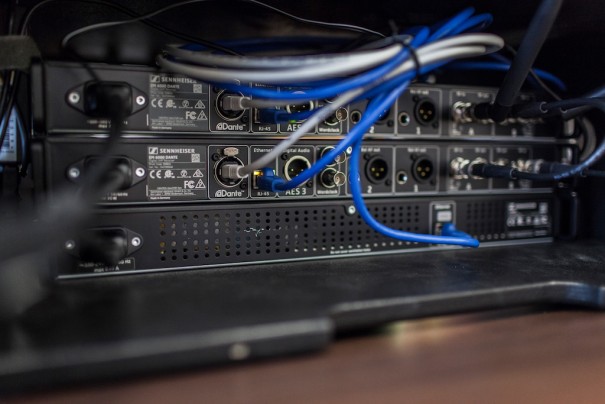Sennheiser estrena el avanzado sistema de microfonía inalámbrica digital 6000
La sorprendente calidad de audio que popularizó la serie 9000 está ahora está disponible en un receptor de dos canales capaz de soportar las producciones en directo más exigentes incluso en los ambiente RF más complejos.
Sennheiser organizó recientemente en Hannover un evento en el que periodistas, distribuidores y destacados usuarios pudieron conocer de cerca el nuevo sistema de microfonía inalámbrica digital 6000. Apenas cinco años después del lanzamiento de la ya popular serie 9000, el fabricante alemán apuesta ahora por una solución con calidad de audio sobresaliente y una transmisión inalámbrica RF sólida para uso en todo tipo de producciones en directo, incluyendo broadcast.
La serie 6000 emplea el mismo modo de largo alcance y el códec de audio digital de Sennheiser tan característicos de la 9000 aunque esta vez va más allá al contar con un receptor de dos canales (en versiones diferentes), un bodypack y un transmisor de mano así como una unidad de recarga para montaje en rack. Digital 6000 ofrece el inigualable modo de transmisión de larga distancia del sistema 9000, acompañado de una masiva banda ancha conmutable de 244 MHz.
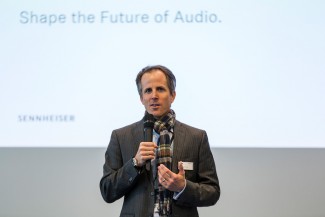 Andreas Sennheiser, CEO de Sennheiser, abrió estas jornadas celebradas en el recinto de Expo Hannover 2000 afirmando que “que el esfuerzo y apuesta por la innovación han marcado la historia de esta compañía desde que la fundara mi abuelo, Fritz Sennheiser, hace setenta y dos años. Nuestro reto continuo ha sido siempre invertir en innovación para crear algo que sea realmente novedoso”.
Andreas Sennheiser, CEO de Sennheiser, abrió estas jornadas celebradas en el recinto de Expo Hannover 2000 afirmando que “que el esfuerzo y apuesta por la innovación han marcado la historia de esta compañía desde que la fundara mi abuelo, Fritz Sennheiser, hace setenta y dos años. Nuestro reto continuo ha sido siempre invertir en innovación para crear algo que sea realmente novedoso”.
Sennheiser, tras destacar el gran número de artistas y grupos musicales de primer nivel que recorren el mundo en sus giras utilizando sus sistemas de microfonía, señaló que “en este momento están convergiendo dos tecnologías: la realidad virtual, donde al audio jugará un papel importante; y la baja latencia para poder transmitir un concierto, por ejemplo, a millones de personas en cualquier lugar a través de streaming”. También hizo hincapié en la importancia del audio en entornos colaborativos que conecten personas y negocios.
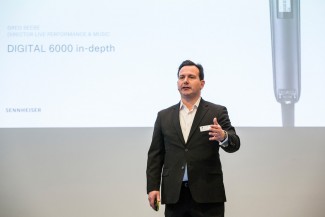 Por su parte, Peter Claussen, COO de la división profesional de Sennheiser, afirmó que “queremos estar siempre en lo más alto para, incluso, estar por delante de todos estos cambios”. “Los desarrollos profesionales en Sennheiser parten ahora siempre desde cómo va a usarse una solución y cómo el software puede ayudar como complemento del hardware a flexibilizar y acercar cada solución al usuario”, añadió.
Por su parte, Peter Claussen, COO de la división profesional de Sennheiser, afirmó que “queremos estar siempre en lo más alto para, incluso, estar por delante de todos estos cambios”. “Los desarrollos profesionales en Sennheiser parten ahora siempre desde cómo va a usarse una solución y cómo el software puede ayudar como complemento del hardware a flexibilizar y acercar cada solución al usuario”, añadió.
Greg Beebe, director de la división de Live Performance&Music, tras dar la “bienvenida al futuro” subrayó la pasión que la compañía ha puesto en el desarrollo de la serie 6000. “Una solución en la que el usuario no estará limitado por aspectos relacionados con RF y frecuencia de audio ya que ofrece una transmisión RF robusta para todo tipo de producciones en vivo con una fácil integración en las infraestructuras existentes en entornos de broadcast, eventos en directo…”, subrayó.
Dos mejor que uno
El nuevo receptor digital EM 6000 se comercializará en dos versiones: con y sin tarjeta DANTE. En ambos casos, cuenta con dos canales, es fácilmente configurable y dispone de un splitter de antena integrado, Ling Range Mode y una codificación de audio propietaria (SeDAC) para asegurar la más alta calidad de audio.
Según el modelo, ofrece en salida dos tarjetas DANTE Brooklyn o Amphenol RJ-45 y cuenta con encriptado AES 256 intercambiable. En analógico, el usuario puede emplear XLR-3 o un jack de 6.3 mm por canal. En lo que se refiere a conectividad, el equipo se integra fácilmente en infraestructuras Ethernet RJ45 y worldclock in/out con conectores BNC.
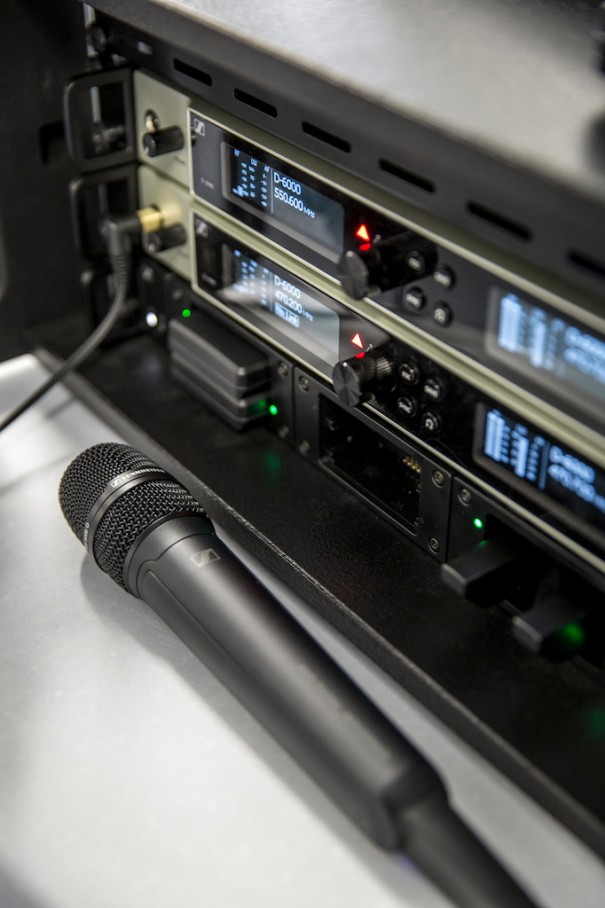 El receptor digital de dos canales trabaja con un ancho de banda intercambiable de 244MHz (470 a 714 MHz), el cual es cubierto por tres versiones de transmisores (470 – 558 MHz, 550 – 638 MHz, y 630 – 718 MHz). Para sistemas más grandes, hasta ocho unidades de receptores pueden ser simplemente conectados en serie sin la necesidad de un divisor de antena adicional ya el sistema multicanal funcionará con un simple par de antenas. La latencia del sistema es de apenas tres milisegundos.
El receptor digital de dos canales trabaja con un ancho de banda intercambiable de 244MHz (470 a 714 MHz), el cual es cubierto por tres versiones de transmisores (470 – 558 MHz, 550 – 638 MHz, y 630 – 718 MHz). Para sistemas más grandes, hasta ocho unidades de receptores pueden ser simplemente conectados en serie sin la necesidad de un divisor de antena adicional ya el sistema multicanal funcionará con un simple par de antenas. La latencia del sistema es de apenas tres milisegundos.
Si algo ha caracterizado los sistemas de Sennheiser es su gran fiabilidad. En este caso, la avanzada tecnología True Bit Diversity permite una correcciones de errores en la transmisión e, incluso, el disimulo de errores adicionales de forma inteligente gracias a la función Intelligent Error Concealment.
True Bit Diversity asegura una mucho mejor calidad de recepción que lo que sería posible con otras técnicas basadas en Diversidad (diversity). En ambientes de RF complicados en los que la señal se corrompe temporalmente a tal grado que la corrección de error de la transmisión no puede repararla, la tecnología de disimulo de errores adicionales inteligentes entra en acción. Ésta emplea algoritmos de aprendizaje inteligentes para reemplazar la señal corrompida, permitiendo una transmisión impecablemente donde otros sistemas digitales fallarían.
Además, los receptores de la serie Digital 6000 están equipados con un Link Indicador de Calidad que permite detectar los problemas con antelación. Cuentan, además, con un monitor OLED amigable para los ojos el cual que permite comprobar e un simple vistazo la calidad de la señal RF, el enlace, la frecuencia de uso, la criptografía o el estado de las baterías.
Transmisor y petaca
En lo que al transmisor de refiere (SKM 6000), es compatible con hasta 17 cápsulas acústicas diferentes (2000, Digital 9000, Neumann KK204 y KK 205…) según cada aplicación. Pero quizás lo más llamativo sea su robustez en frecuencia ya que está totalmente libre de intermodulación incluso cerca de múltiples transmisores.
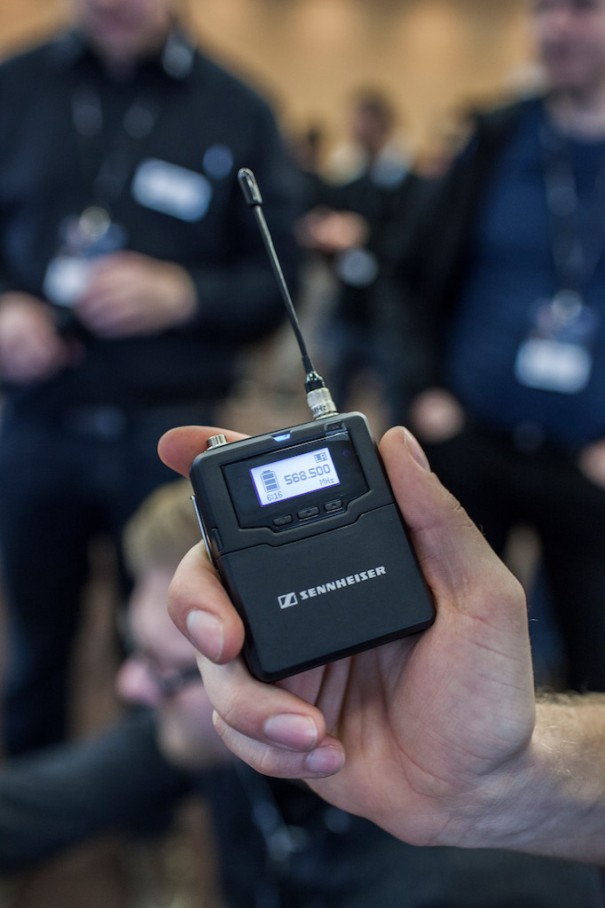 Los transmisores utilizan los mismos accupacks recargables de alto rendimiento que las unidades de la serie 9000.
Los transmisores utilizan los mismos accupacks recargables de alto rendimiento que las unidades de la serie 9000.
En cuanto al beltpack (SK 6000), Sennheiser presenta una petaca digital, pero ligera y robusta. Su gran ancho de banda garantiza flexibilidad y fiabilidad incluso en los ambientes RF más contaminados y exigentes.
El bodypack SK 6000 está listo para usarse con los micrófonos clip-on MKE 1 (omni-direccional) de Sennheiser así como en las versiones de transmisión digital el MKE 2 (omni) y el MKE 40 (cardioide).
Es de reseñar que la nueva propuesta de Sennheiser trabaja con antenas estándar UHF activas y pasivas, mientras los filtros de la antena selectiva de frecuencia están contenidos en el receptor EM 6000. Por lo tanto, la infraestructura de antena existente en una instalación puede seguir utilizándose con la consecuente optimización de costes.
Estación de carga
Para agilizar la producción en eventos en directo, Sennheiser acompaña esta serie con la estación de carga L 6000, con un diseño modular capaz de integrarse en racks de 19 pulgadas (1 RU). Una ventaja es que permite añadir cuantos módulos de carga de baterías de iones de litio sean necesarios (hasta cuatro). Cada uno de estos módulos recarga dos petacas o dos baterías para los transmisores de mano. El usuario puede seguir fácilmente el estado de carga de cada batería gracias a un display LED en color. Además, si desea una información más detallada como ciclos de carga o capacidad restante pueden monitorizarse de forma remota e inalámbrica a través del software Wireless Systems Manager.
Por último, en cuanto a la nueva serie 6000, destacar que todo el ecosistema, incluyendo la estación de carga, ofrece una monitorización inteligente, remota e inalámbrica a través de Wireless Systems Manager (WSM) con posibilidad de escaneado del sistema y setup.
La función de configuración automática de frecuencia de esta serie 6000 y el software del control y monitoreo WSM facilitan el trabajo del ingeniero de monitoreo y el ingeniero de RF.
La serie 6000 es compatible con el modo de largo alcance del Digital 9000; también, los transmisores de la Serie 6000 pueden ser usados con el receptor de cámara EK 6042.
La serie 6000 a prueba
Para demostrar las posibilidades de la nueva serie 6000, Sennheiser durante las jornadas de presentación en Hannover organizó en el Pepermint Park de la Expo un concierto protagonizado por la cantante suiza Anna Rossinelli quien deleitó a todos acompañada de guitarra y bajo con un elegante pop-soul. El brillo del audio y la robustez en la transmisión de la serie 6000 sorprendieron a cuantos acudieron a este convierto de la joven cantante que representó a Suiza en 2011 en el Festival de Eurovisión.
Para que el nuevo sistema de microfonía inalámbrica llegue a los usuarios con la máxima garantía, Sennheiser cuenta en sus factorías con los más estrictos procesos de control de calidad. Basta visitar el centro de producción de Hannover para darse cuenta de que la calidad roza la obsesión. Todos los equipos que aquí se fabrican se someten a los más duros controles de estrés en los se ponen a prueba a temperaturas extremas en hornos, se dejan caer una y mil veces o se someten a fuertes vibraciones. Solo aquellos equipos que superan con éxito todas estas duras pruebas llegarán finalmente al mercado.
Además en el desarrollo de las soluciones de Sennheiser, como destaca Peter Claussen, colaboran ingenieros y usuarios de cara a introducir cambios en la versión final en el momento del lanzamiento… y todo ello, sin menoscabar en la agilidad de los procesos con una fuerte apuesta por el I+D.
Sus aportaciones a la tecnología han sido reconocidas con galardones como el premio al Logro Científico, otorgado por la Academia de Ciencias y Artes Cinematográficas de Estados Unidos, el Grammy, el Emmy y otros concedidos por diversas organizaciones especializadas como la AES.
Sus factorías están ubicadas en Alemania, Irlanda y México donde se fabrican todas los componentes que conforman el extenso portfolio de soluciones de la empresas del grupo: Neumann, Berlin y Sennheiser Communications.
Did you like this article?
Subscribe to our NEWSLETTER and you won't miss anything.



